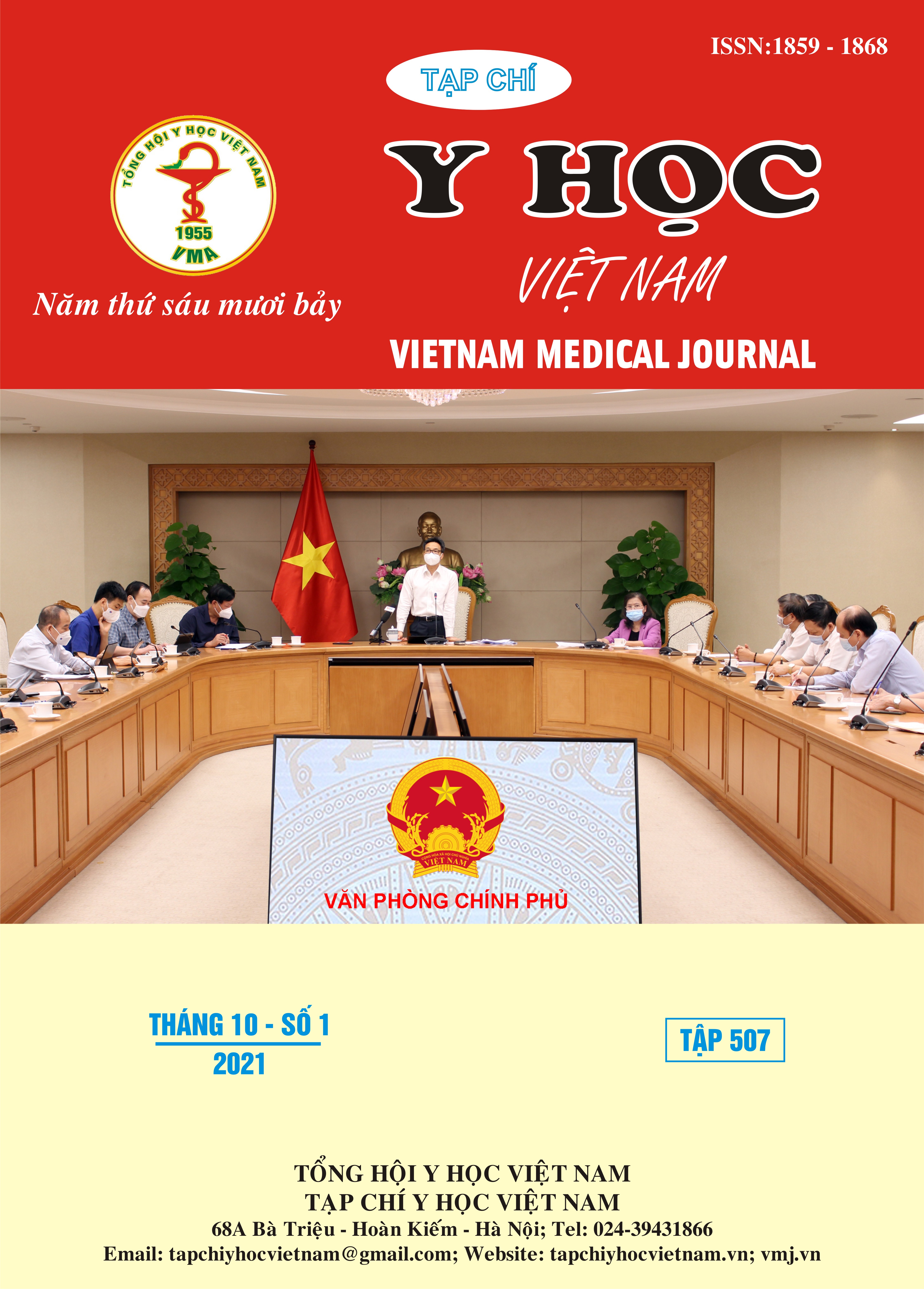EVALUATION OF SURGICAL SITE INFECTION AND FACTORS RELATED TO PATIENTS UNDER-GOING GASTROINTESTINAL SURGERY AT THANH NHAN HOSPITAL
Main Article Content
Abstract
Purpose: The study aimed to describe the characteristics of surgical site infection (SSI) of patients undergoing gastrointestinal surgery at Thanh Nhan Hospital and analyzing some factors related to surgical site infection. gastrointestinal surgery from July 2020 to December 2020. Material and methods: The study conducted descriptive and prospective observational methods on gastrointestinal surgery patients at the Department of General Surgery, Thanh Nhan Hospital, during the study period from July 2020 to July 2020. end of December 2020. Results: The mean age of patients in this study was 48.56 ± 22.45, 46.1% of patients had no history of comorbidities. In 228 surgeries, there were 136 patients without postoperative drainage (59.6%), 170 laparoscopic surgeries, accounting for 74.6%; there were 58 open surgeries, accounting for 25.4%. Clean-contaminated surgery with the largest number of patients was 134 patients (58.8%). The risk index of surgical site infection used according to the NNIS system: 41 (18.0%) patients were at high and very high risk of surgical site infection. Postoperative infection is correlated with a number of factors: history of comorbidities; surgical procedure; surgery time; Postoperative drainage placement. Incisions classified as clean - infected, contaminated, dirty have a higher risk of wound infection than incisions with clean classification. Conclusion: The percentage of patients with surgical site infection did not differ according to age, BMI, and surgical method. The risk index of surgical site infection and the rate of UTI are correlated with accompanying medical history, surgical classification, surgical method, surgical time, postoperative drainage status, in addition. Risk index of surgical site infection also correlates with age, ASA classification, type of surgery. The duration of postoperative treatment of the group of patients with surgical site infection was much longer than that of the group of patients without surgical site infection.
Article Details
Keywords
Surgical site infection, SSI, Gastrointestinal surgery
References
2. Bộ Y tế (2012), "Hướng dẫn phòng ngừa nhiễm khuẩn vết mổ", Ban hành kèm theo Quyết định số: 3671/QĐ -BYT ngày 27 tháng 9 năm 2012 của Bộ Y tế.
3. Nguyễn Quốc Anh, Nguyễn Việt Hùng và Phạm Ngọc Trường (2012), "Tỷ lệ mới mắc và yếu tố nguy cơ nhiễm khuẩn vết mổ tại một số bệnh viện của Việt Nam, 2009 - 2010", Tạp chí Y học thực hành, 830(7), tr. 28-32.
4. Meyer E., Schwab F., Gastmeier P. và các cộng sự. (2006), "Surveillance of antimicrobial use and antimicrobial resistance in German intensive care units (SARI): a summary of the data from 2001 through 2004", Infection, 34(6), tr. 303-9.
5. World Health Organization (2009), Prevention of hospital acquired, A practical guide 2nd edition, Geneva, Switzerland.
6. Lê Minh Luân (2006), "Nghiên cứu sử dụng kháng sinh dự phòng và một số yếu tố nguy cơ nhiễm khuẩn vết mổ trong phẫu thuật tiêu hóa bệnh viện Việt Đức Hà Nội", Đề tài thạc sĩ, Trường đại học Y Hà Nội.
7. Nguyễn Việt Hùng và Nguyễn Quốc Anh (2010), "Nhận xét về tỷ lệ mắc, yếu tố nguy cơ, tác nhân gây bệnh và hậu quả của nhiễm khuẩn vết mổ tại một số bệnh viện tỉnh khu vực miền Bắc (2009 - 2010)", Y học lâm sàng, số 52 (tháng 5/2010), tr. 16 - 23.


